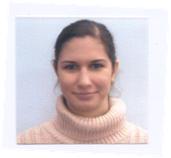Program Information
Non-Invasive in Vivo Biodosimetry in Radiotherapy Patients Using Electron Paramagnetic Resonance (EPR) Spectroscopy
N Bahar1*, K Roberts1 , F Stabile1 , N Mongillo1 , RD Decker1 , LD Wilson1 , Z Husain1 , J Contessa1 , BB Williams2 , AB Flood2 , HM Swartz2 , DJ Carlson1 , (1)Yale University School of Medicine, New Haven, Connecticut, (2)Geisel Medical School at Dartmouth University, Hanover, New Hampshire
Presentations
SU-C-BRD-5 (Sunday, July 12, 2015) 1:00 PM - 1:55 PM Room: Ballroom D
Purpose: Medical intervention following a major, unplanned radiation event can elevate the human whole body exposure LD50 from 3 to 7 Gy. On a large scale, intervention cannot be achieved effectively without accurate and efficient triage. Current methods of retrospective biodosimetry are restricted in capability and applicability; published human data is limited. We aim to further develop, validate, and optimize an automated field-deployable in vivo electron paramagnetic resonance (EPR) instrument that can fill this need.
Methods: Ionizing radiation creates highly-stable, carbonate-based free radicals within tooth enamel. Using a process similar to nuclear magnetic resonance, EPR directly measures the presence of radiation-induced free radicals. We performed baseline EPR measurements on one of the upper central incisors of total body irradiation (TBI) and head and neck (H&N) radiotherapy patients before their first treatment. Additional measurements were performed between subsequent fractions to examine the EPR response with increasing radiation dose. Independent dosimetry measurements were performed with optically-stimulated luminescent dosimeters (OSLDs) and diodes to more accurately establish the relationship between EPR signal and delivered radiation dose.
Results: 36 EPR measurements were performed over the course of four months on two TBI and four H&N radiotherapy patients. We observe a linear increase in EPR signal with increasing dose across the entirety of the tested range. A linear least squares-weighted fit of delivered dose versus measured signal amplitude yields an adjusted R-square of 0.966. The standard error of inverse prediction (SEIP) is 1.77 Gy. For doses up to 7 Gy, the range most relevant to triage, we calculate an SEIP of 1.29 Gy
Conclusion: EPR spectroscopy provides a promising method of retrospective, non-invasive, in vivo biodosimetry. Our preliminary data show an excellent correlation between predicted signal amplitude and delivered dose. With further development, a robust means of predicting delivered radiation dose from EPR measurements is expected.
Funding Support, Disclosures, and Conflict of Interest: This project was funded by the Biomedical Advanced Research and Development Authority (BARDA) within the U.S. Department of Health and Human Services subcontracted through the Geisel School of Medicine at Dartmouth and by the Dartmouth Physically-Based Biodosimetry Center for Medical Countermeasures Against Radiation (Dart-Dose CMCR) Pilot Program.
Contact Email:


